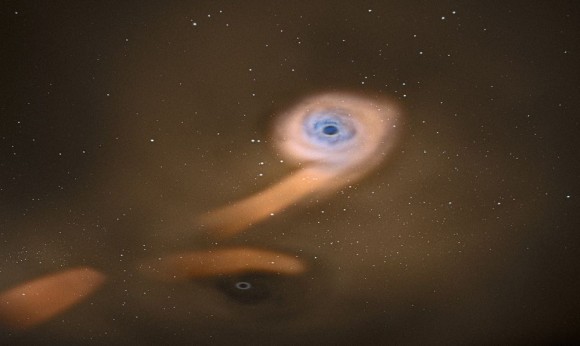
An international research team has discovered a pair of supermassive black holes in orbit around one another, according to an announcement today (April 22, 2014) from the Max Planck Institute for Radio Astronomy in Bonn, Germany. This is the first time a pair of orbiting, supermassive black holes has been found in an ordinary galaxy. In the past they were found only in so-called active galaxies. This pair was discovered because the black holes ripped apart a star when ESA’s space observatory XMM-Newton happened to be looking in their direction.
The findings are published in the May 10 issue of the Astrophysical Journal, and appeared online today at the astrophysics preprint server.
Most massive galaxies in the universe are thought to harbor at least one supermassive black hole at their centers. Two supermassive black holes are considered to be the smoking gun that the galaxy has merged with another. Thus, finding binary supermassive black holes can tell astronomers about how galaxies evolved into their present-day shapes and sizes.
To date, only a few candidates for close binary supermassive black holes have been found. All are in active galaxies where they are constantly ripping gas clouds apart, in the prelude to crushing them out of existence.
In the process of destruction, the gas is heated so much that it shines at many wavelengths, including X-rays. This gives the galaxy an unusually bright center, and leads to it being called active. The new discovery, reported by Fukun Liu from Peking University in China, and colleagues, is important because it is the first to be found in a galaxy that is not active.
Read more at the website of the Max Planck Institute for Radio Astronomy











